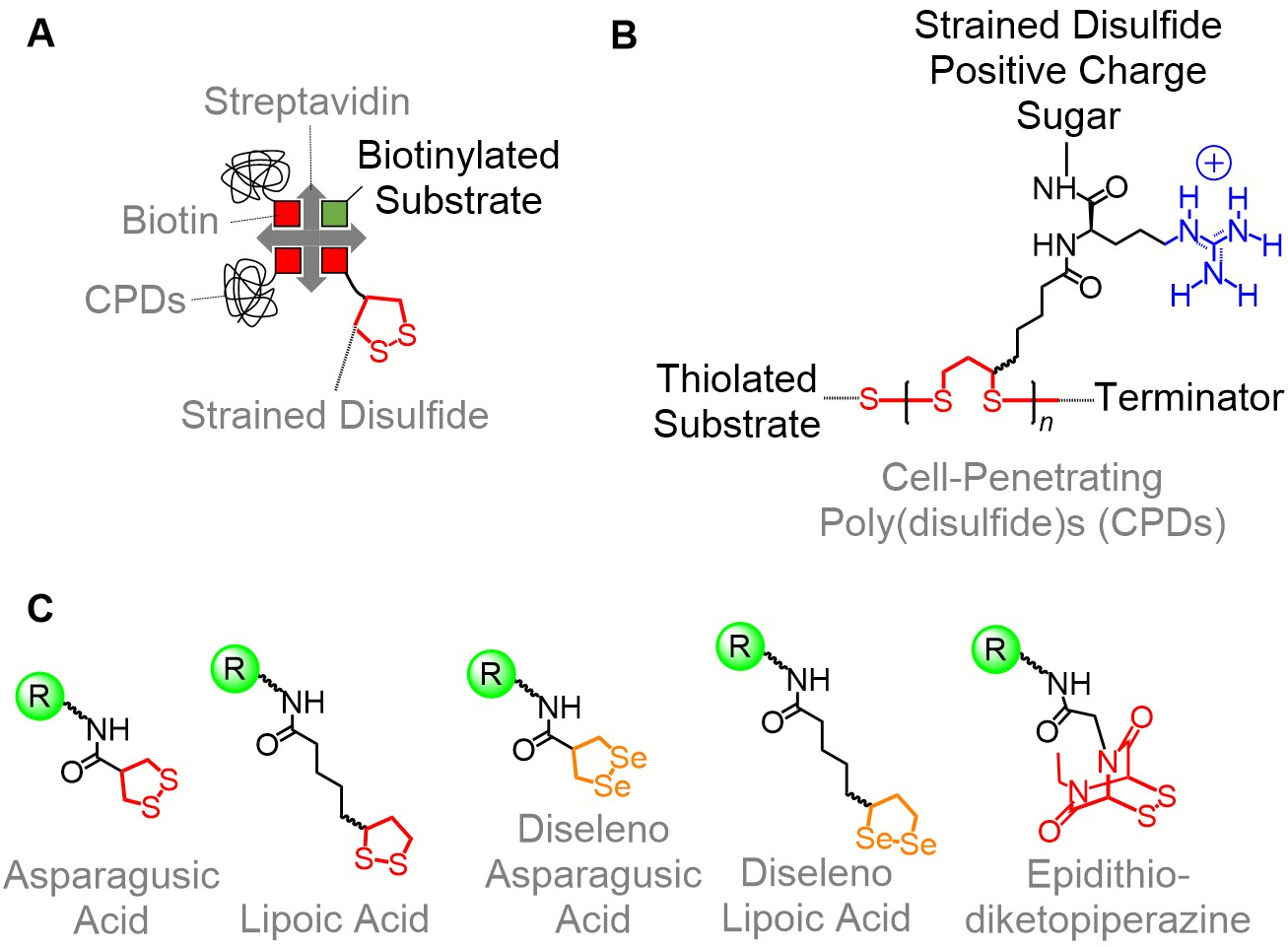Transporters for Thiol-Mediated Uptake
The delivery of functional substrates into living cells is one of the main challenges in chemistry and biochemistry. In order to address this, we have developed two type of transporters: Cell-penetrating poly(disulfide)s (CPDs) and strained cyclic disulfides.[1] The efficiency of uptake for both methods involves the underestimated thiol-mediated uptake coupled with counterion-mediated uptake for CPDs and ring tension release for strained cyclic disulfides. A large variety of compounds have been delivered by those transporters, from small molecules such as fluorophores[1,2] to giant substrates such as liposomes and polymersomes.[3] Different strategies are now being investigated to broaden the scope of substrates to be delivered such as the streptavidin/biotin technology, side-chain and terminator functionalization for CPDs, and new cyclic molecules for strained-promoted thiol-mediated uptake as presented in Figure 1.

Figure 1. Transporters for thiol-mediated uptake. Streptavidin complexes are formed with a biotinylated substrate and multiple CPDs or strained disulfides (A). The substrate can be directly attached to CPDs (B). Library of compounds for strained cyclic thiol-mediated uptake (C).
[1] Gasparini, G.; Bang, E.-K.; Montenegro, J.; Matile, S. Chem. Commun. 2015, 51, 10389-10402.
[2] Zong. L.; Bartolami, E.; Abegg, D.; Adibekian, A.; Sakai, N.; Matile, S. ACS Cent. Sci. 2017, in press.
[3] Chuard, N.; Gasparini, G.; Moreau, D.; Lörcher, S.; Palivan, C.; Meier, W.; Sakai, N.; Matile, S. Angew. Chem. Int. Ed. 2017, 54, 2947-2950.